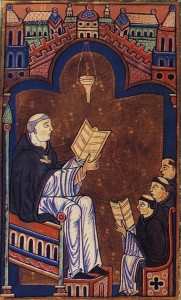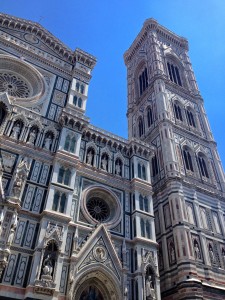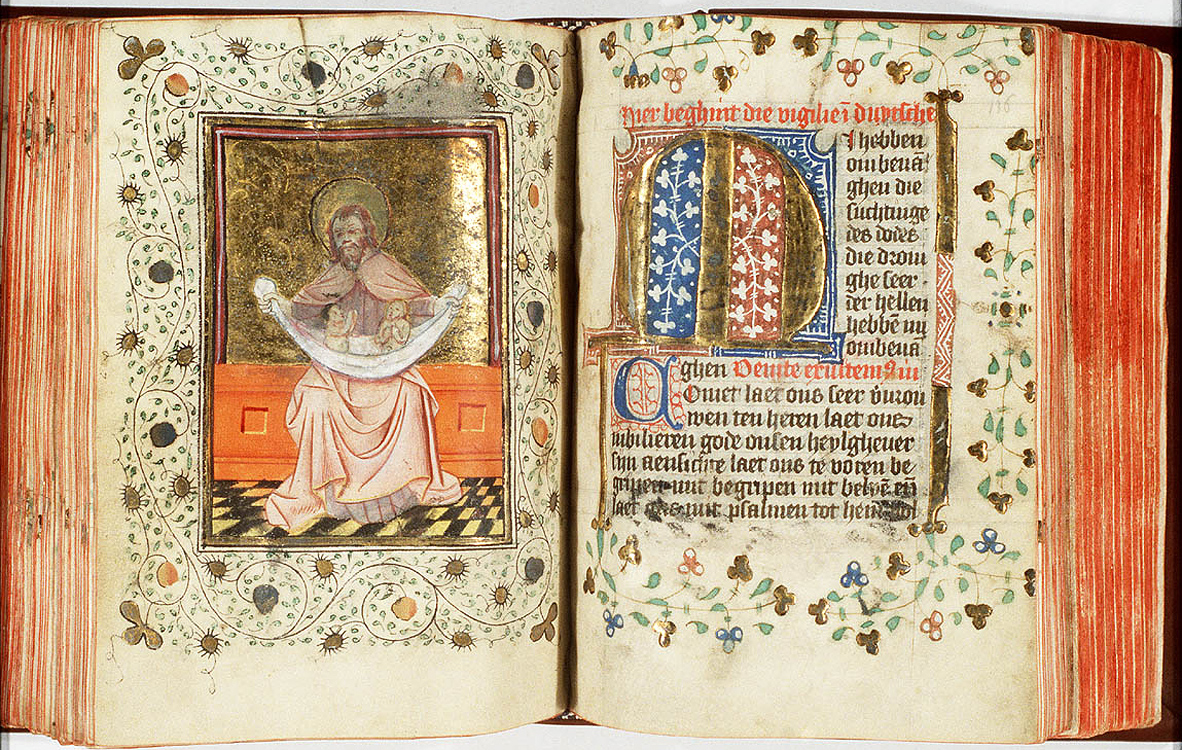
I love making connections. It is almost like a game to me, which might border upon an obsession. I always want to connect one experience to another event; one thought to another concept; one movie soundtrack to another classical score; this to that. Making connections is how human beings make sense of the world. We are always comparing and connecting one thought or experience to another. When driving a car, we connect certain colors to the act of stoping or going. We connect certain smells to certain foods. We connect certain images with past events, and those events we connect with certain emotions. We are always making connections. And if we have an ounce of creativity, we can even look at a situation and connect it with a possibility.
Given my love for making connections, especially unconventional ones, my mind was blown when I took a course in college entitled The History of Biblical Interpretation. In this class I witnessed some of the greatest minds of the Christian faith make connections with scripture to things I would have never put together. They would connect scripture to a certain theological concept, or to an aspect of everyday life, or to another seemingly unrelated scripture text. They did this the way great composers take the eighty-eight keys on a piano and combine and arrange them into music that can stir the deepest parts of our soul. Just as most people have access to the same eighty-eight keys that Chopin and Rachmaninov had, so too do most people have access to the same sixty-six books of the bible. However, the wonder and awe comes with how the masters can connect and contextualize those things.
And like a budding pianist, I saw the beauty that the masters of biblical interpretation created and I wanted to do the same sort of work. I wanted to experience scripture as they did. I needed to see scripture as they saw it. Perhaps this is part of my vocation. The word vocation comes from the Latin word vocare, meaning ‘to call.’ And I felt as though I was being called to a new world. I wanted to, in Luke Timothy Johnson’s words, “imagine the world that scripture imagines.”(1)
Just as a pianist learns fundamental techniques that enable them to perform complicated pieces of music, so too can the Christian learn “techniques” in handling scripture. To begin, the church has long held the assumption that scripture has a mysterious depth to it that provides layers of meaning. If God is eternal and fathomless, then the scriptures that are God-inspired will have a similar quality to them. With this in mind, Christians have long approached scripture as having four general “senses” to it. These four senses span the wide spectrum of possible meaning that scripture can offer our lives. Thomas Aquinas sums it up nicely like this:
The historical or literal sense of Scripture is the obvious meaning, the things that the words directly point to, so when the Bible talks about rocks, the literal sense of its words are rocks: you know, those hard, stony things. But then there’s also a threefold spiritual sense. When things in the Old Law signify things in the New Law, that’s the allegorical sense: so when the Old Testament describes Moses hitting the rock and water flowing from it, that text refers literally to an actual rock, and allegorically to Jesus, from whom living water flows. Then when things symbolize what we ought to do, they are to be read in the moral sense: so when Jesus challenges anyone without sin to throw rocks at the woman caught in adultery, the moral or tropological sense is that we ought not to judge because we are sinful too. Finally, the anagogical sense is when the words of the Bible refer to our eternal glory, so when the Israelite prophets refer to the restoration of Jerusalem, the literal meaning is the actual city of Jerusalem, but the anagogical sense is the Kingdom of God.(2)
For me, scripture began to come alive because it was no longer a static text in which I hunted for some meaning, but it became a window through which to see the kingdom of God in my immediate context. Or better yet, to see my immediate context within the larger reality of the kingdom of God. After a while, I not only saw scripture differently, but I began to see the world differently. The world was full of meaning; full of connections; full of potential. The materials of my everyday life became like the eighty-eight keys on a piano. Laid before me in all of their unremarkable simplicity was a wide range of possibility to create something beautiful. As Longfellow puts it in his poem, The Builders:

For the structure that we raise,
Time is with materials filled;
Our to-days and yesterdays
Are the blocks with which we build.
Truly shape and fashion these;
Leave no yawning gaps between;
Think not, because no man sees,
Such things will remain unseen.
In the elder days of Art,
Builders wrought with greatest care
Each minute and unseen part;
For the Gods see everywhere.
Let us do our work as well,
Both the unseen and the seen;
Make the house, where Gods may dwell,
Beautiful, entire, and clean.
I have a deep desire to approach my life in the same manner that an artisan approached his work in the “elder days of Art.” In light of this deep longing, found myself reading “reading” my everyday life they way I was reading scripture — as if there was always a wide spectrum of possible meanings that were connected with the kingdom of God. As these convictions began to solidify within my soul, I was also nearing the deadline to submit my proposal for a sabbatical grant. Therefore, I decided to craft a sabbatical in the form a pilgrimage that would give me the opportunity to strengthen and form some of these artistic habits of interpretation.
As Jon Levenson once observed, “geography is simply a visible form of theology.”(3) With this in mind I did not want to traverse various geographical terrains without being mindful of all the theological connections. I wanted this pilgrimage to be a transcendent journey. I wanted the journey to have multiple “senses” to it, similar to the way in which scripture has multiple senses to it. I did not want to merely have a literal pilgrimage (the first sense), I wanted a fourfold pilgrimage. Not only that, but I wanted to return home with the habits and dispositions of living my everyday life in an immersion of meaning.
1. Luke Timothy Johnson, “Imagining the World Scripture Imagines,” Modern Theology 14 (1998): 165-80.
2. Thomas Aquinas expounds on this in his Summa Theologiae, in Article 10 of Question 1 in the Prima Pars.
3. Jon D. Levenson, Sinai and Zion: An Entry into the Jewish Bible, 116.



